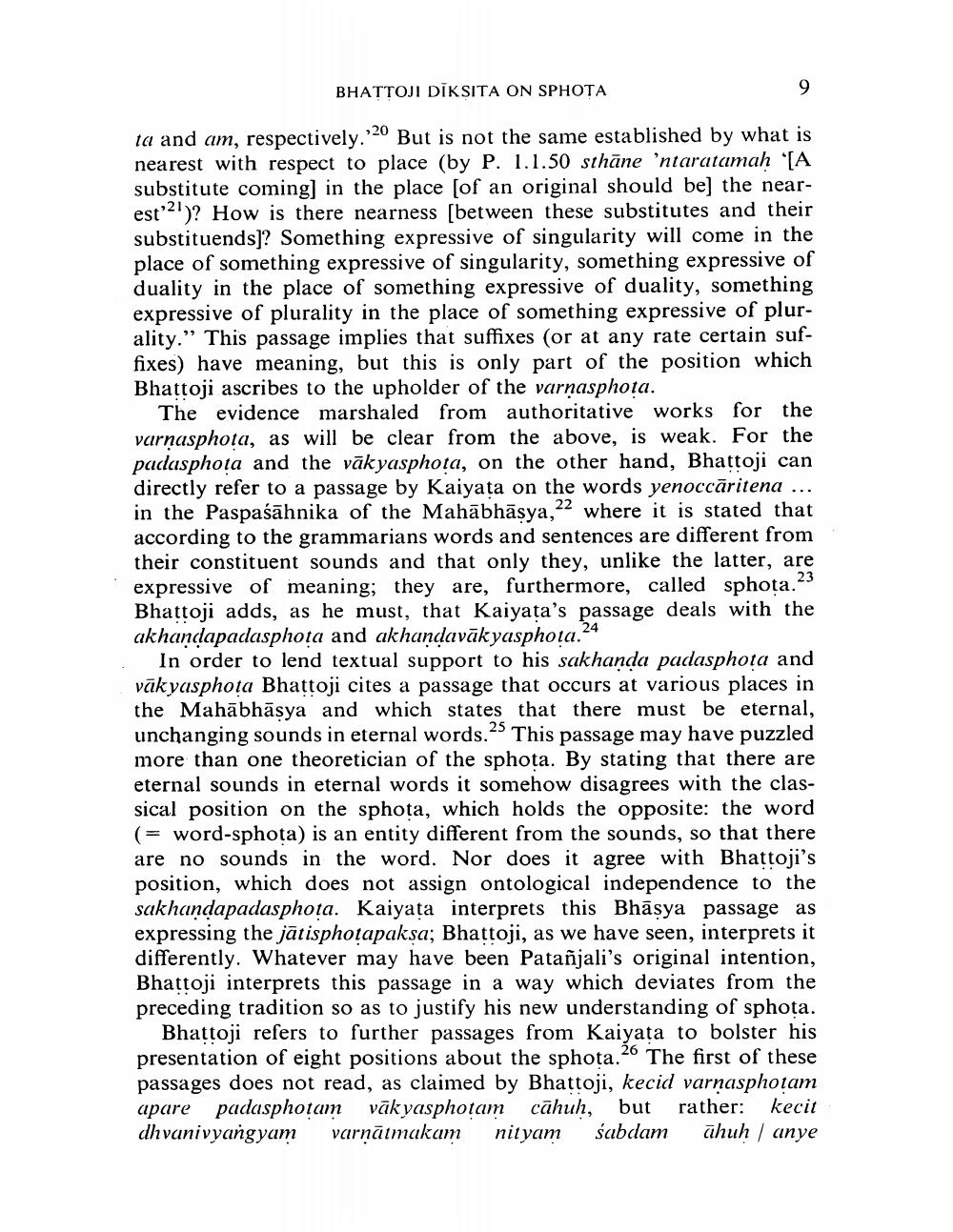Book Title: Bhattoji Diksita On Sphota Author(s): Johannes Bronkhorst Publisher: Johannes Bronkhorst View full book textPage 7
________________ BHATTOJI DIKSITA ON SPHOTA ta and am, respectively. 20 But is not the same established by what is nearest with respect to place (by P. 1.1.50 sthāne 'ntaratamah '[A substitute coming) in the place (of an original should be) the nearest'?')? How is there nearness [between these substitutes and their substituends)? Something expressive of singularity will come in the place of something expressive of singularity, something expressive of duality in the place of something expressive of duality, something expressive of plurality in the place of something expressive of plurality.” This passage implies that suffixes (or at any rate certain suffixes) have meaning, but this is only part of the position which Bhattoji ascribes to the upholder of the varnasphota. The evidence marshaled from authoritative works for the varnasphota, as will be clear from the above, is weak. For the padasphota and the vāk yasphota, on the other hand, Bhattoji can directly refer to a passage by Kaiyata on the words yenoccăritena ... in the Paspaśāhnika of the Mahābhāsya, 22 where it is stated that according to the grammarians words and sentences are different from their constituent sounds and that only they, unlike the latter, are expressive of meaning; they are, furthermore, called sphota.23 Bhattoji adds, as he must, that Kaiyata's passage deals with the akhandapadasphota and akhandavāk yasphota.24 In order to lend textual support to his sakhanda padasphota and vākyasphota Bhattoji cites a passage that occurs at various places in the Mahābhāsya and which states that there must be eternal, unchanging sounds in eternal words.25 This passage may have puzzled more than one theoretician of the sphota. By stating that there are eternal sounds in eternal words it somehow disagrees with the classical position on the sphota, which holds the opposite: the word (= word-sphota) is an entity different from the sounds, so that there are no sounds in the word. Nor does it agree with Bhattoji's position, which does not assign ontological independence to the sakhandapadasphota. Kaiyata interprets this Bhāsya passage as expressing the jātisphotapaksa; Bhattoji, as we have seen, interprets it differently. Whatever may have been Patañjali's original intention, Bhattoji interprets this passage in a way which deviates from the preceding tradition so as to justify his new understanding of sphota. Bhattoji refers to further passages from Kaiyata to bolster his presentation of eight positions about the sphota.26 The first of these passages does not read, as claimed by Bhattoji, kecid varnasphotam apare padasphotam vāk yasphotam cāhuh, but rather: kecit dhvanivyangyam varṇātmakam nityam sabdam ūhuh / anyePage Navigation
1 ... 5 6 7 8 9 10 11 12 13 14 15 16 17 18 19 20 21 22 23 24 25 26 27 28 29 30 31 32 33 34 35 36 37 38 39
